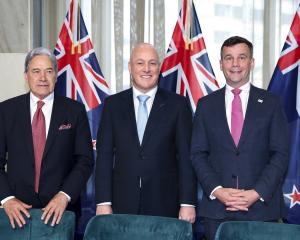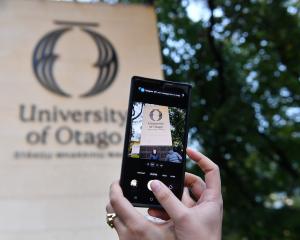Two long-range ballistic missile tests by two nuclear powers in one week was something the superficially peaceful world hadn't seen for a long time.
The North Korean rocket launch was allegedly a cover-up for its ballistic missile programme and the Indian Agni V prompted strong responses.
The North Korean effort might have been a flop, but the Agni V missile was accurate, prompting a media frenzy on an impending "arms race" between China and India. And apparently the world is doomed because of that.
From what I gathered from the various opinion articles and the comment boards, the arguments can be broadly classified into these categories.
1. Nuclear warheads and the means of delivery are horrific for world peace. So the mad race which started between China and India should immediately be stopped.
2. Poor Third World countries should take care of the poverty and other legions of problems than take part in arms build-up.
3. All aid should be stopped and both these countries should strictly be under punitive sanctions.
Each is arguable. First, the view that nuclear weapons actually guarantees world peace is often argued quite convincingly, including by realist scholars like John Lewis Gaddis and John Mearsheimer, who dubbed the Cold War as the era of the Long Peace. But that is not all.
The idea that nuclear weapons are looked on as offensive is fundamentally flawed.In fact, nuclear weapons are not ever meant to be used as weapons of mass destruction.
The roles of nuclear power in the defensive strategy of the great powers changed essentially from the 1960s onwards, and they were looked at for deterrent power rather than destruction.
The problem with nuclear weapons is the danger of proliferation, particularly to rogue or failed states.
They can be used as bargaining chips and cannot be controlled by the responsible international community.
But they can only be kept under check by strict United Nations supervision and punitive measures.
In a continuation of the first argument, the potential arms race in South Asia is mentioned.
That, though, was inevitable, and has been happening for the past three years.
Both China and India, in accordance with their economic rise and increased international roles, are undertaking massive militarisation.
China, which is undeniably way ahead of India in conventional and strategic forces, is keeping the United States in mind, and trimming down the mega flab of the People's Liberation Army - introducing more technological punch, including its first aircraft carrier, satellite-destroying missile and cyber warfare group.
India, the sole democracy, however flawed, in a tough neighbourhood, is afraid of China's proxy on its western border.
Thus far, it has the better navy and air force, but this is threatened by China's military modernisation.
Knowing it couldn't match China dollar for dollar, India went for maximum deterrence.
The Agni missile is a "second strike" weapon, and for all practical purposes will never be used.
It is only to be used after India is devastated by a massive "first strike", when millions have already died, and half of the major cities are already smoked to cinders.
This missile gives guarantee that India will still be able to "punish severely the perpetrators of that particular outrage, so that their continuation in any form or fray thereinafter will be doubtful", in the words of General Padmanabhan in 2002, when asked about India's second strike capability.
Since we all know wars, most importantly postmodern wars, are between unequal forces, we can safely assume that this missile actually secures against misadventure or broader war in the region between the two most populous nations of the world.
And by the way, here's something for the peaceniks and commentators in various Western forums: both India and China, have official "no first use" and "minimum credible deterrence" policies, unlike the United States or Russia or, for that matter, any other nuclear weapon-carrying state.
The second and third arguments are about poverty and smell of colonial snobbery and superiority, especially when India and China are actually trying to bail out Europe.
This whole Third World nomenclature should be carefully looked at again.
Further, Indian Foreign Minister Pranab Mukherjee actually voluntarily wished to give up the aid from Britain, mentioning that the aid is "peanuts compared to the development, and space programmes spending" of India, which caused a major uproar in the British Parliament.
Clearly, it's puerile for the world to expect India and China investing billions of dollars from Afghanistan to Africa, sending warships to tackle piracy off Somalia's coast and mining in South China Sea, not to invest in their own military.
There are, indeed, valid arguments about priorities.
Both India and China suffer from massive poverty and unequal wealth, not unlike the West's growing divisions in society.
Both face a breakdown in law and order occasionally and face the biggest threat of Islamic fundamentalism, none of which can be tackled with aircraft carriers or intercontinental ballistic missiles.
It is also important to note that both the Governments of India and China have behaved in a sensible fashion, unlike the jingoistic media of both countries. Signs of mature times are ahead, hopefully.
A few more ballistic missiles will not alter the balance of the global geo-strategic scenario.
It is a just a part of the natural progression that with economic might comes military spending.
It would be quite naive not to expect that.
Sumantra Maitra is a freelance journalist from India who has has blogged for the Washington Examiner and the World Tribune and contributed to the Jerusalem Post and Pravda. He is at present a postgraduate student in international studies at the University of Otago.











